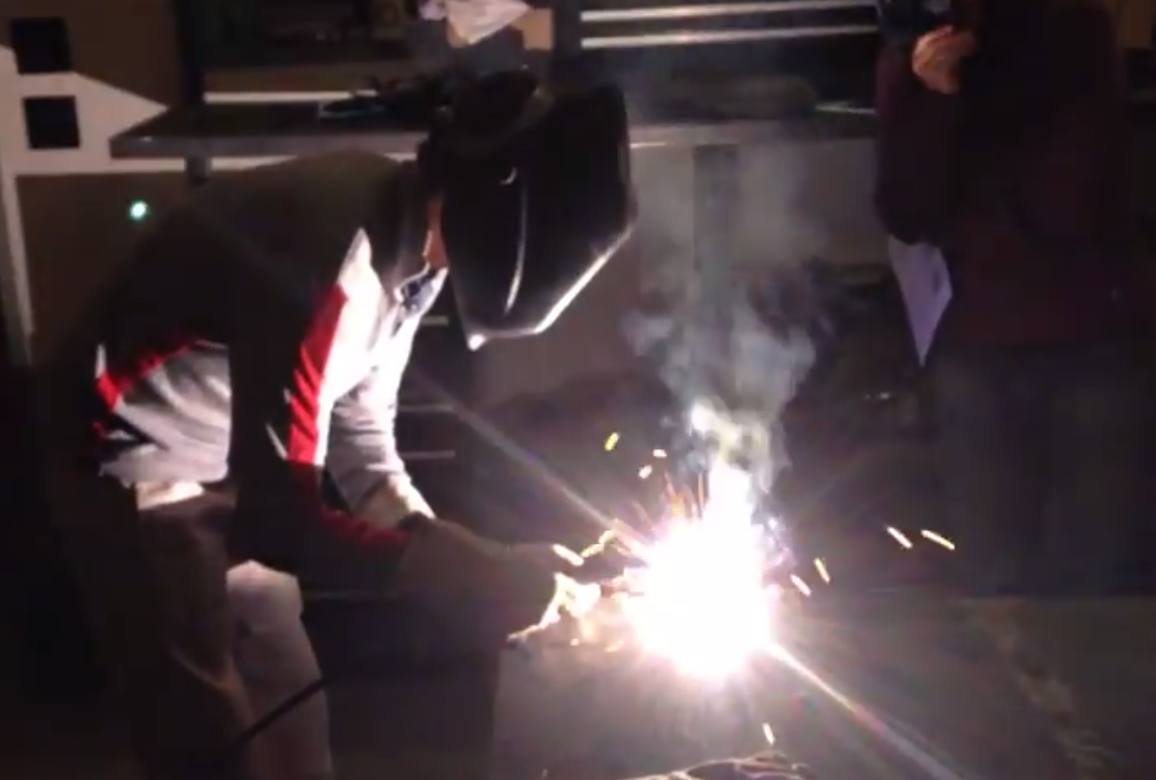Last night I took a class through Denver’s new learning startup Dabble on MIG Welding. The class was taught by structural engineer Nick Geurts of Martino & Luth, Inc.. During the class, hosted in Nick’s backyard garage and workshop, we covered the very basics of welding techniques, and then some of the specifics of entry level MIG Welding on mild steel. After welding a few pieces of steel together, I felt pretty confident in making a basically usable weld – although certainly not perfect or professional.
Mig Welding, from Wikipedia:
Gas metal arc welding (GMAW), sometimes referred to by its subtypes metal inert gas (MIG) welding or metal active gas (MAG) welding, is a welding process in which an electric arc forms between a consumable wire electrode and the workpiece metal(s), which heats the workpiece metal(s), causing them to melt, and join. Along with the wire electrode, a shielding gas feeds through the welding gun, which shields the process from contaminants in the air. The process can be semi-automatic or automatic. A constant voltage, direct current power source is most commonly used with GMAW, but constant current systems, as well as alternating current, can be used. There are four primary methods of metal transfer in GMAW, called globular, short-circuiting, spray, and pulsed-spray, each of which has distinct properties and corresponding advantages and limitations.
